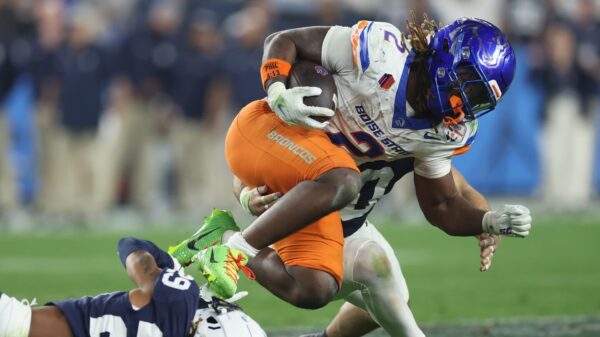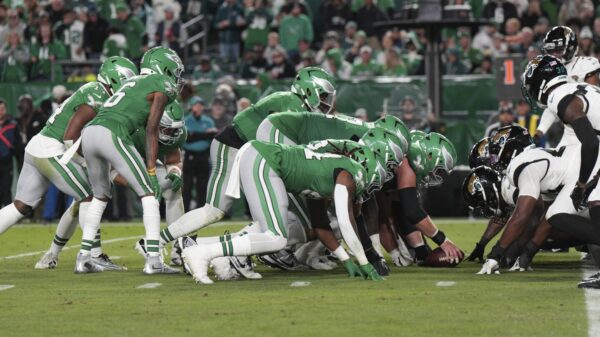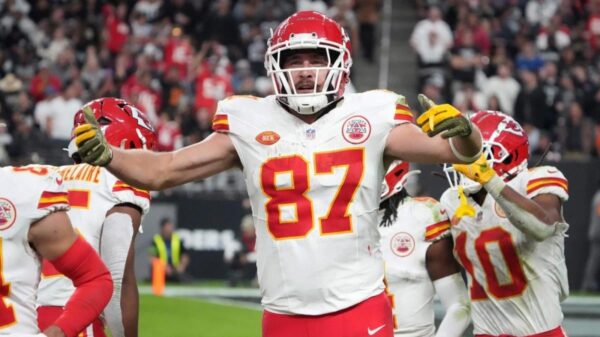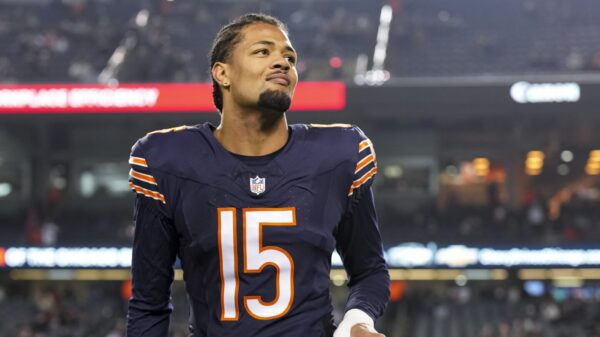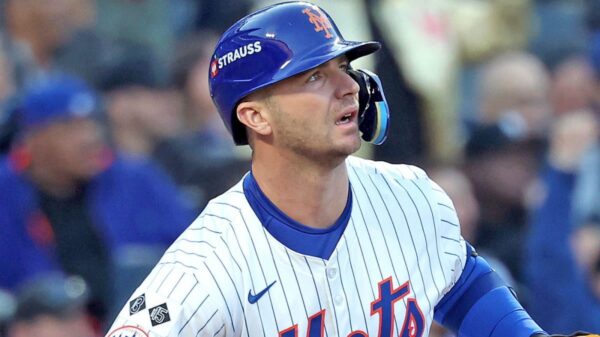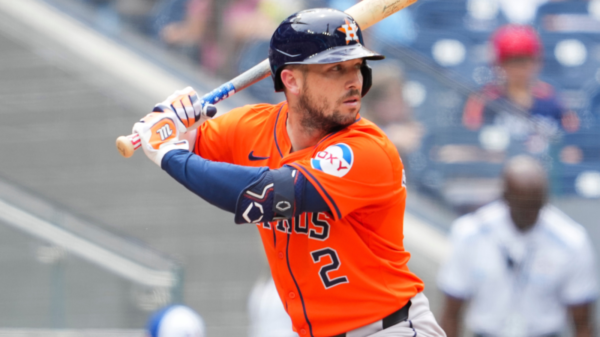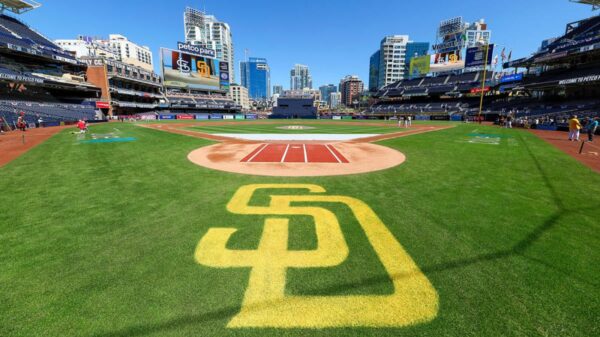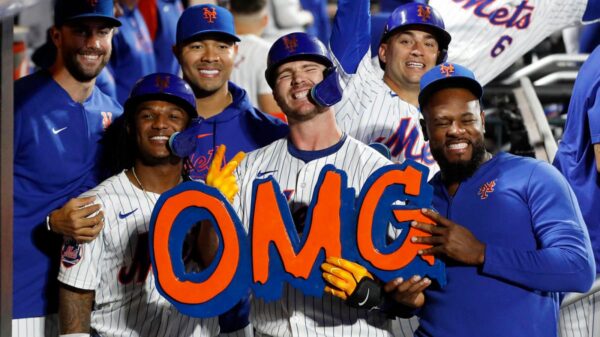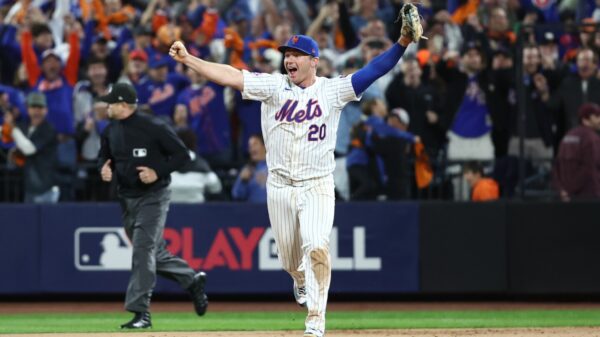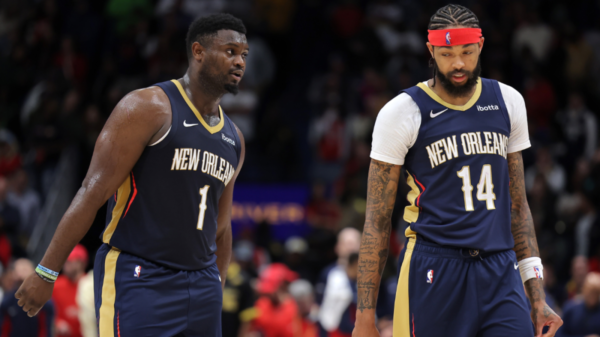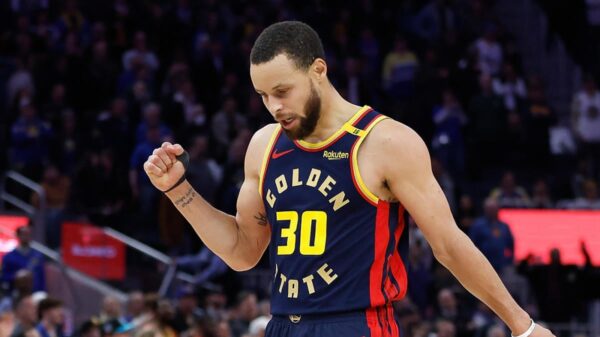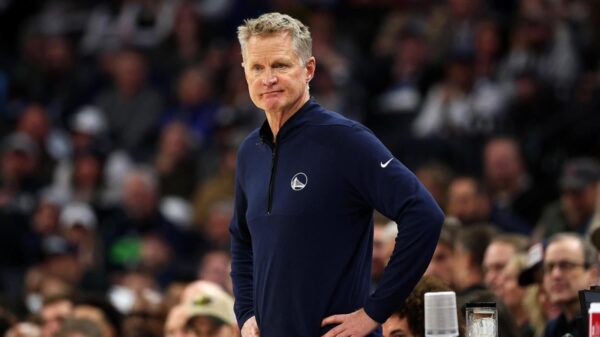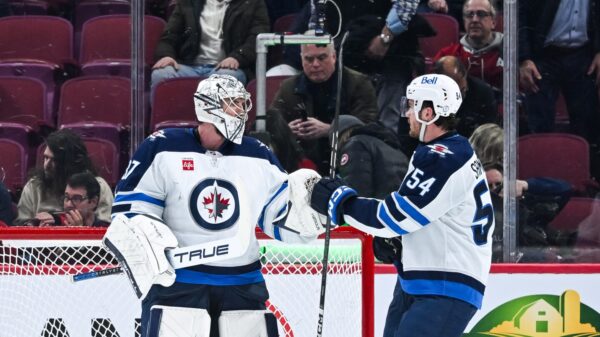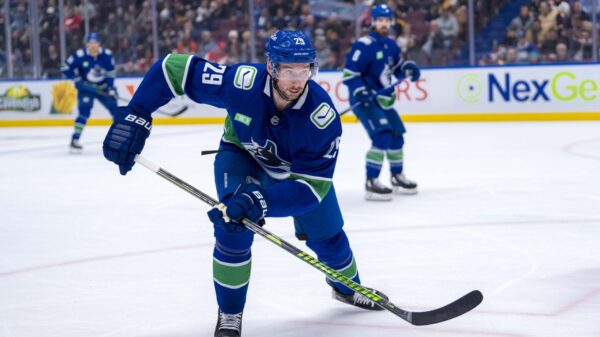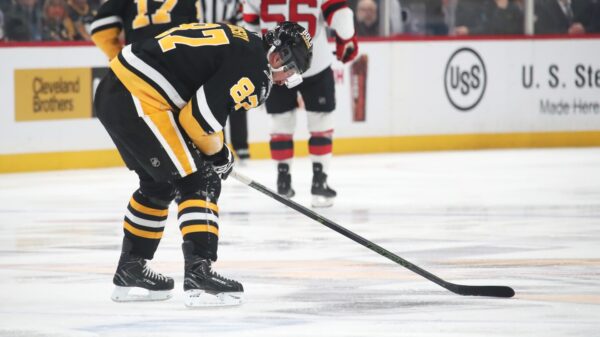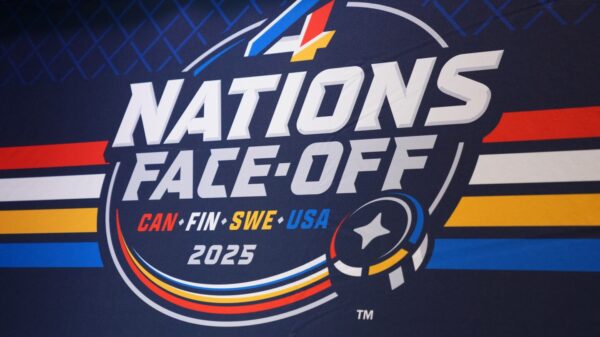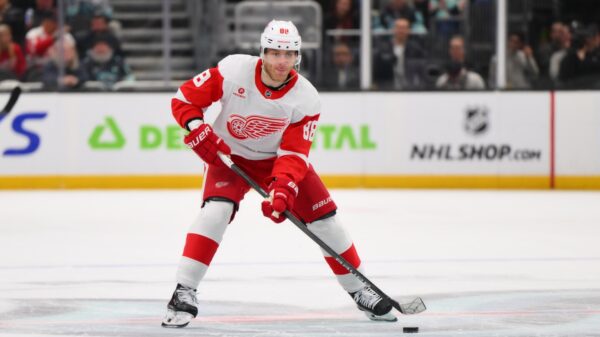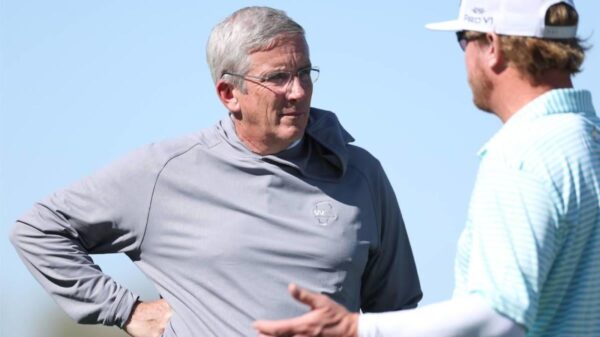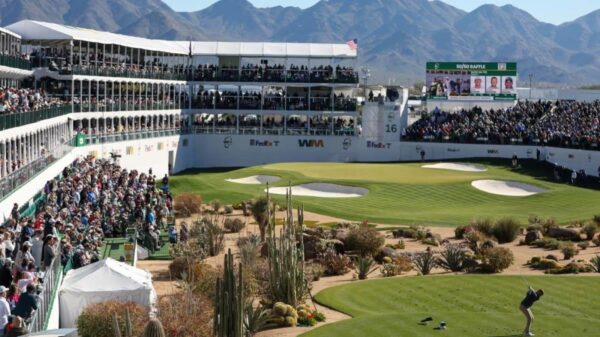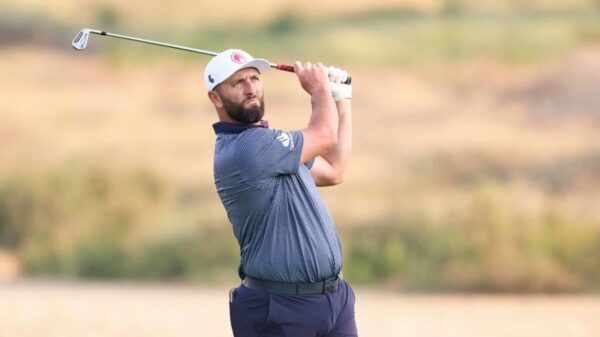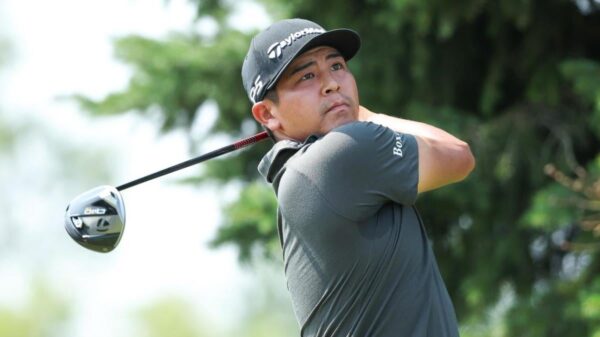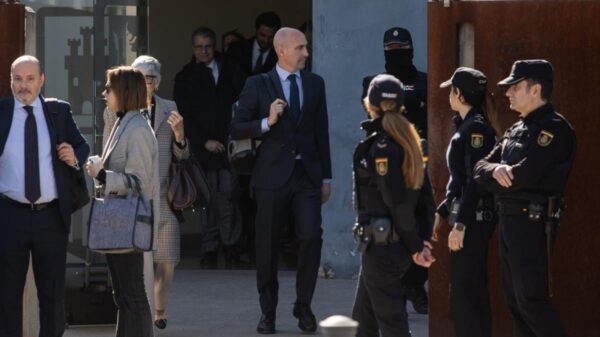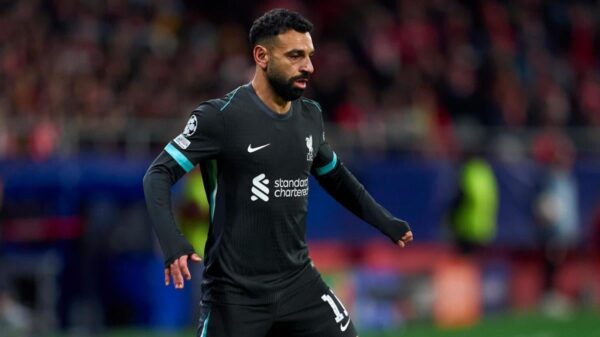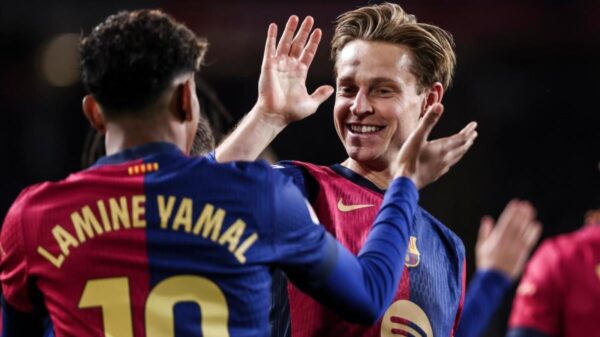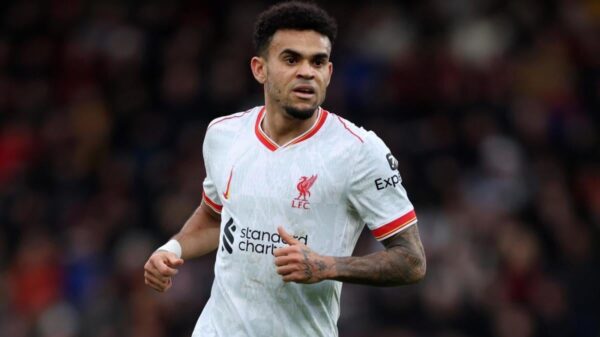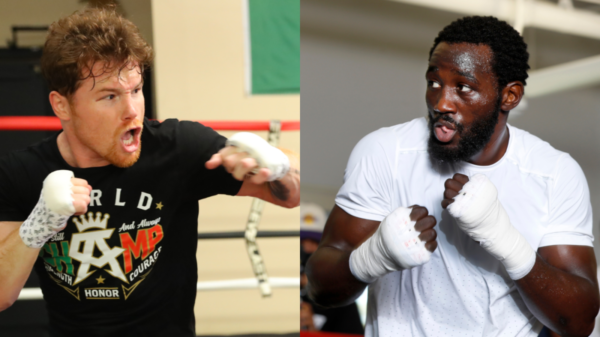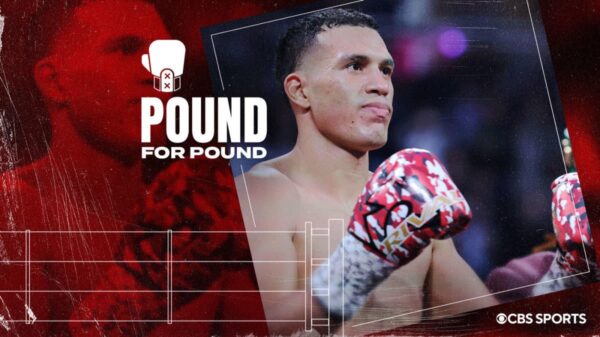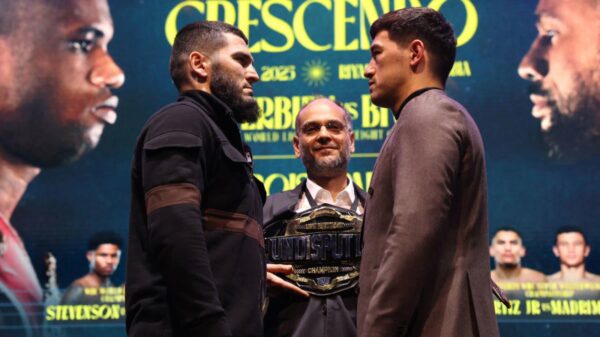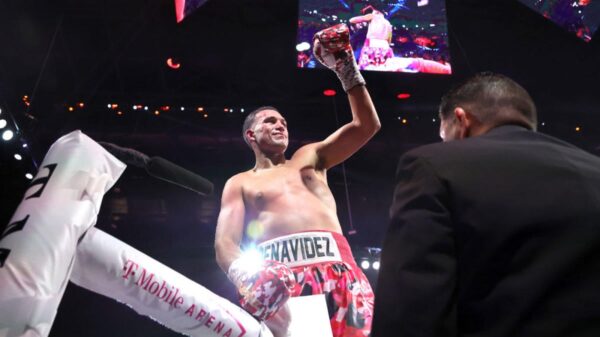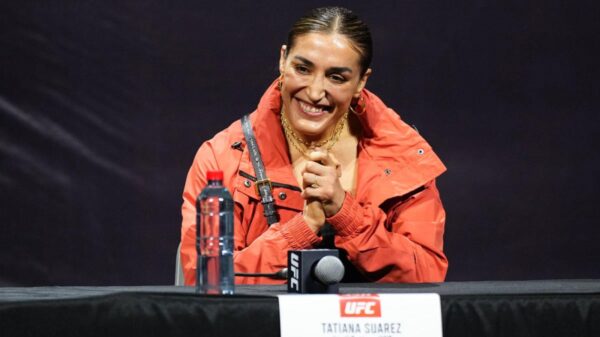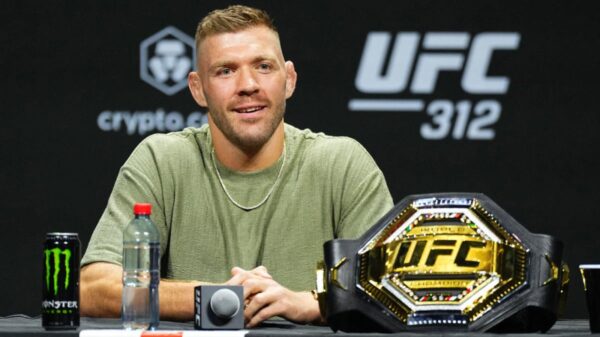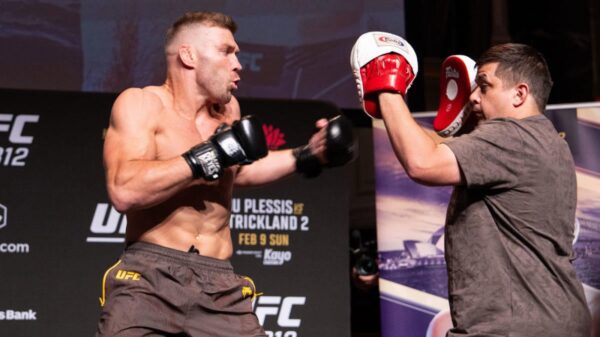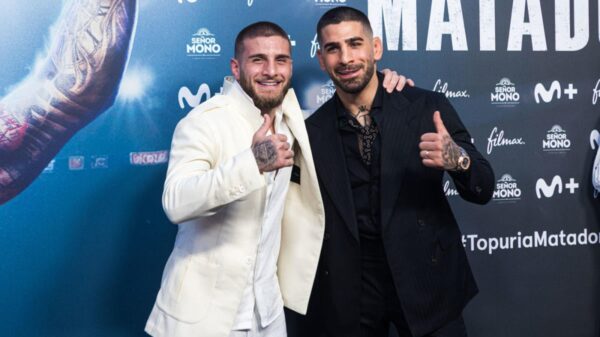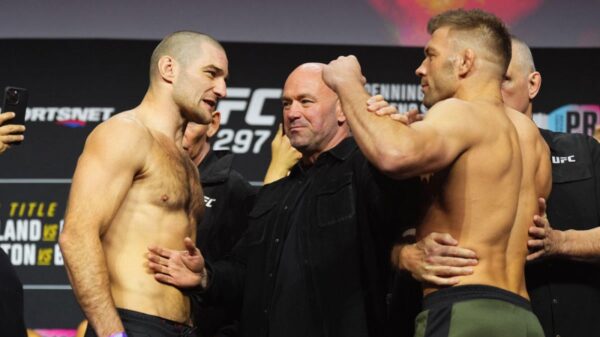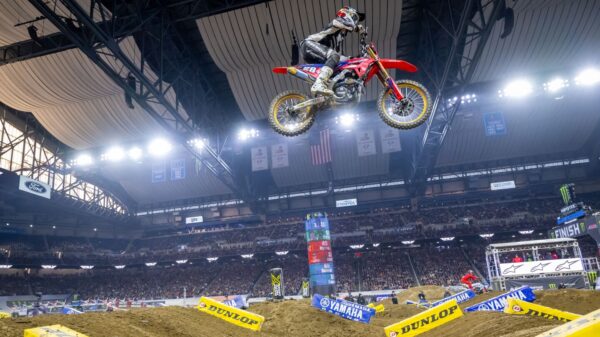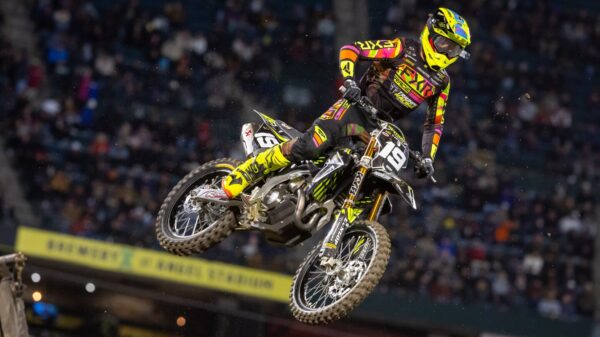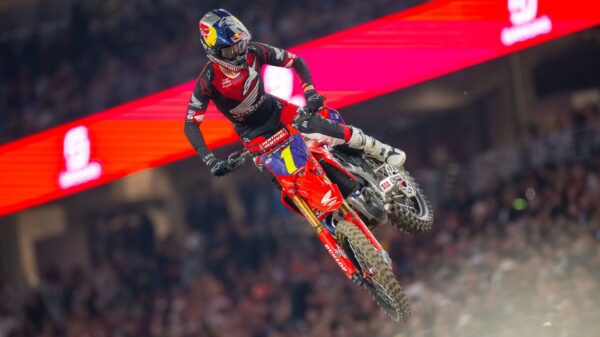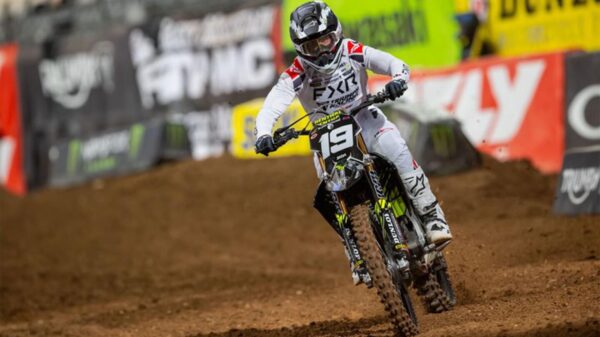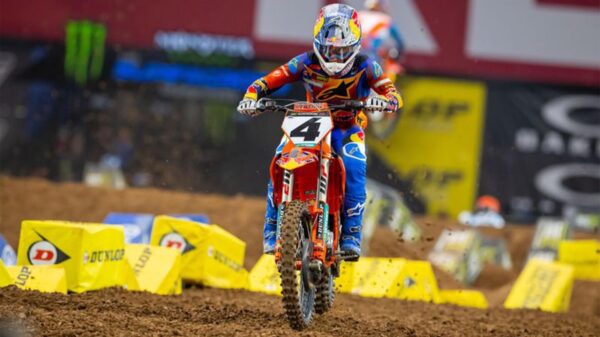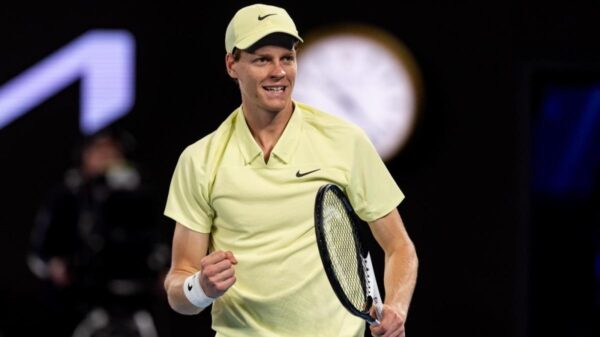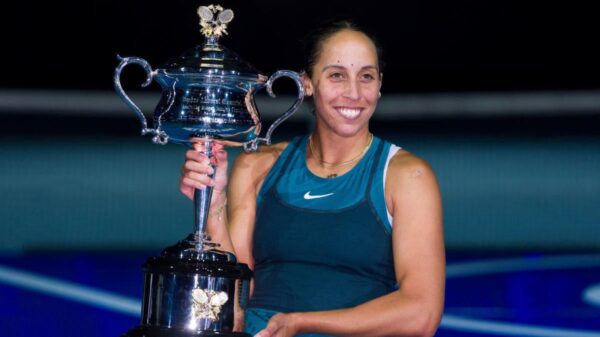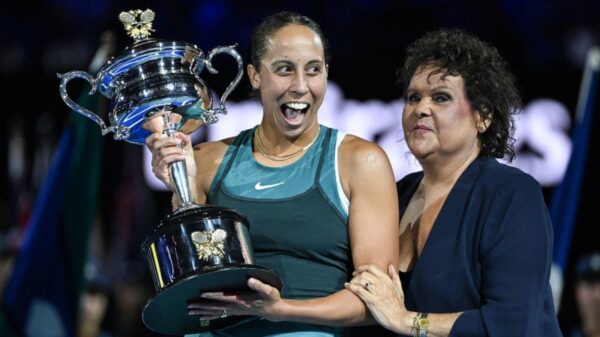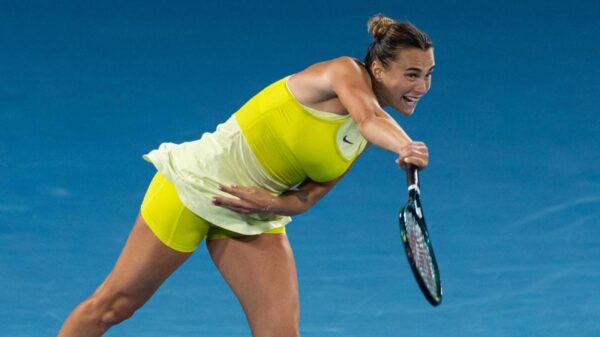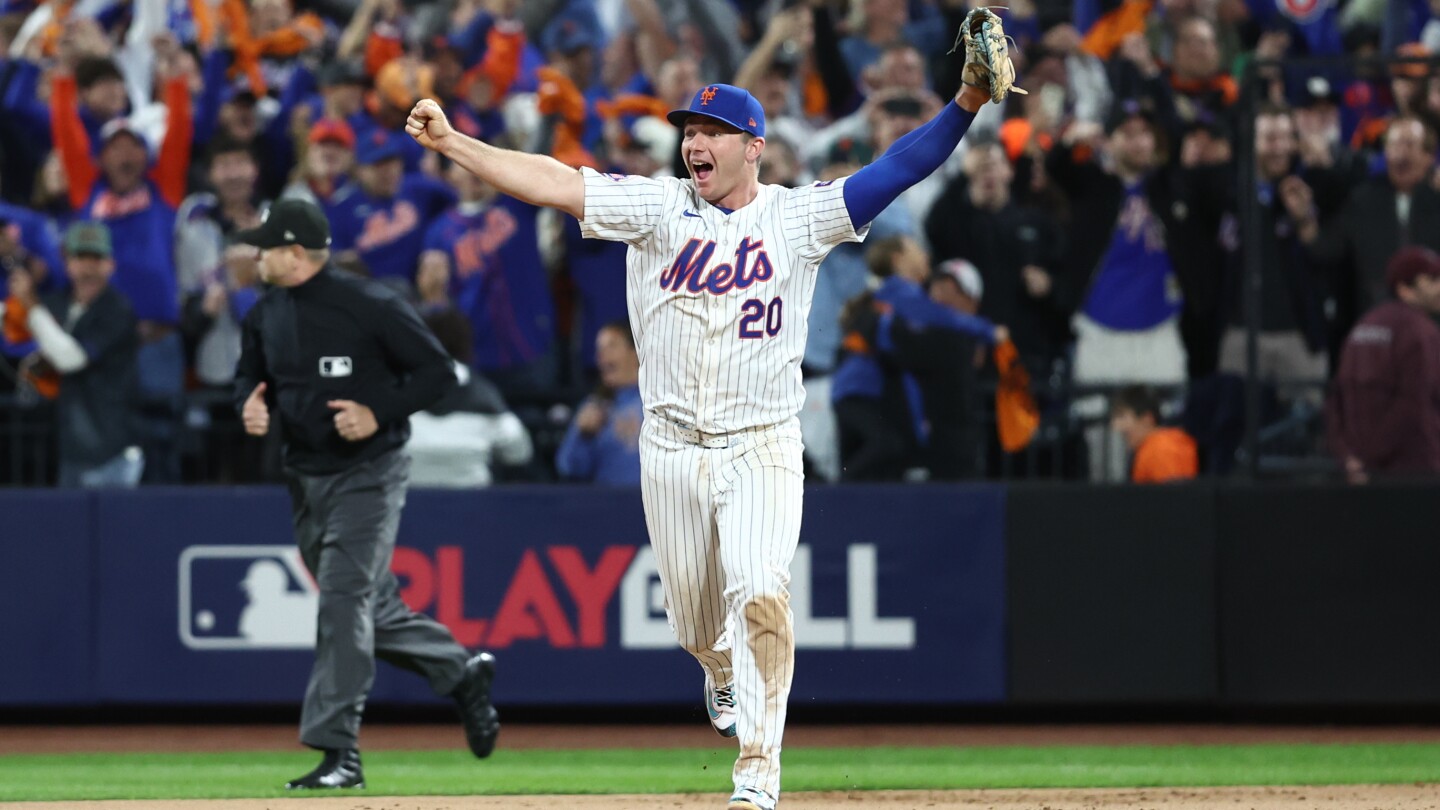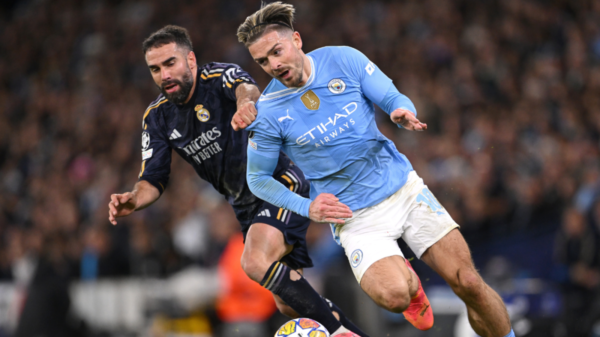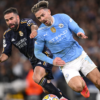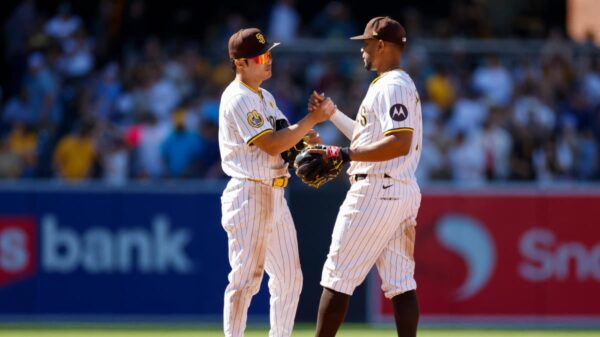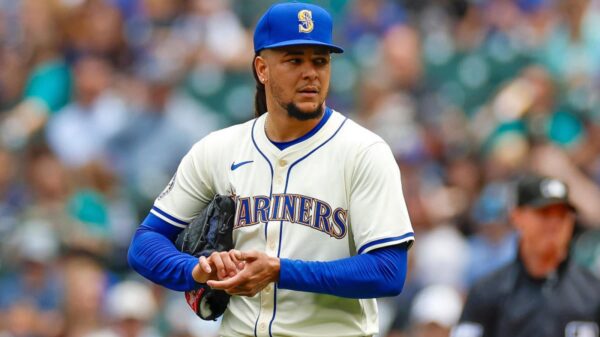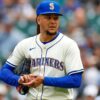The most high-profile “Will they/won’t they” since Jim and Pam finally came to an end on Wednesday night when the New York Mets re-signed first baseman Pete Alonso to a two-year, $54 million contract. The deal comes with a $10 million signing bonus and an opt-out after the first season, making it essentially a one-year, $30 million deal.
Pete Alonso’s deal with the New York Mets, which is pending physical, is for two years and includes an opt-out after the first season. He’ll make $30 million this year.
— Jeff Passan (@JeffPassan) February 6, 2025
So what does this mean for the Mets, both in the long and short term, and what should we expect from Pete Alonso in this new-look Mets lineup?
How does this impact Pete Alonso’s fantasy value?
Not much if we’re being honest. Pete is returning to his old team and also has the type of raw power where he was going to hit home runs no matter where he signed. A more hitter-friendly park may have helped with his batting average though as Alonso has hit .217/.318/.504/ in 2023 and .240/.329/.459 in 2024.
I believe most of that batting average regression has to do with a clear change in approach Alonso made since he hit .271/.318/.504 in 2022 with 40 home runs. It seems that Alonso wanted to tap into even more power, as his fly ball rate jumped 4% in 2023 and his overall swing rate dropped over 6%. He was more patient, taking more called strikes but doing more damage when he did make contact with a leap in barrel rate and HR/FB rate. The issue is that he also saw his strikeout rate rise and his Ideal Contact Rate fall as some of those added fly balls were not well-struck.
That new approach carried into 2024, where Alonso had a 43% overall swing rate, which is well below the league average and 7% below his 2022 mark. He’s swinging and missing less, and his zone contact rates remain above average, but he also had a 19.2% called strike rate in 2024, which is well above league average. Taking more strikes has also led to more advantageous counts for pitchers and, according to Statcast’s Run Value, even though Alonso does damage on four-seam fastballs, his production against secondary pitches has plummeted.
|
2022 Run Value |
2023 Run Value |
2024 Run Value |
|
|
Slider |
4 |
3 |
-9 |
|
Curve |
9 |
1 |
-2 |
|
Changeup |
10 |
0 |
3 |
That corresponds with his increasing struggles in the shadow area of the strike zone, which Statcast categorizes as the corners of the strike zone. In 2022, Alonso put up a -5 Run Vale in the shadow area, which doesn’t seem great but ranked 42nd in all of baseball, tied with Alex Bregman, Yandy Diaz, and Ketel Marte. In 2023, that number fell to -26 and was at -18 in 2024. That put him 213th in baseball alongside players with questionable contact skills like Jose Siri, Anthony Rizzo, and Jack Suwinski.
Now, Kyle Schwarber and Elly De La Cruz also posted a -18 run value in the shadow area of the strike zone, and both of them, like Alonso, can do real damage when a pitcher has to challenge over the plate, but Alonso being more passive has gotten him into less favorable counts and pitchers are attacking him more comfortably on the fringes of the strike zone.
As a result, I think you’re still looking at Alonso as a .230-.240 hitter with 35+ home run power. However, his counting stats should be better in 2024 now that he’ll be hitting behind Juan Soto. His run totals will depend on how much Mark Vientos improves in a full season as a starter and whether Brandon Nimmo can put together another strong season, but Alonso should push for 190 Runs+RBI. That’s essentially the same season he had last year with maybe 10-15 more RBIs. It’s a safe profile to draft in all fantasy leagues but not one with the upside we saw two years ago.
How does this impact the Mets in 2025?
For starters, it’s a great move for the clubhouse. The Mets thrived off their “vibes” in 2024, but while many will ignore that truth, a cohesive clubhouse can go a long way toward improving production on the field. Alonso has arguably been the face of the franchise since he made his MLB debut and has been a consistently impactful bat over his six seasons with the Mets, slashing .249/.339/.514/.854 with 226 home runs and 586 RBIs (more on that later). Having him in the lineup is certainly a plus.
It also allows the Mets to move everybody down one spot in the order. Signing Juan Soto was obviously a huge boon for the Mets, and having him and Francisco Lindor at the top of the lineup is arguably the best 1-2 punch in baseball. However, the Mets lineup was full of question marks after that. Was Brandon Nimmo really a three-hitter? Could Mark Vientos carry over his contact gains and be a legit clean-up hitter? Would Francisco Alvarez ever make enough contact to produce a solid batting average? If Vientos shifted to first base, who was going to play third? Is Jesse Winker really a middle-of-the-order hitter?
Having Alonso installed as a stalwart in the middle of the lineup gives the Mets three dependable bats and reduces the burden any of those other hitters need to shoulder. That’s a good thing because this lineup will need punch to compensate for the question marks in their rotation.
We should note that bringing Alonso back means he will man first base again with Mark Vientos at third. In 2024, Alonso was in the third percentile in Outs Above Average at first base with a score of -9. That’s not good and is unlikely to get better as he ages. However, Alonso did rank first in all of baseball by successfully making 93% of first base scoops in 2024, and that’s a huge benefit to the infield and provides peace of mind for all the other infielders, so it’s not all bad defensively.
On the flip side, Vientos was pretty bad defensively at third base last season, producing a -6 Outs Above Average and negative scores for his range as well. He’s just 25 years old and has undoubtedly been working on his defense in the offseason, but the Mets have below-average defense at the corners, and if they decide to play 32-year-old Jeff McNeil at second base, then they will have only average defense at that spot. That’s great news for any pitchers on their team who figure to rely on groundballs like Sean Manaea, Frankie Montas, and Clay Holmes.
How does this impact the Mets in the longer term?
With Alonso signing what amounts to just a one-year contract, the Mets are keeping themselves open to landing their prize target next off-season: Vladimir Guerrero Jr. The 25-year-old is easily the top target in next year’s free agent class, and, according to Katie Woo, “intends to cut off extension talks with the Toronto Blue Jays on February 18, the date of the team’s first full-squad workout.” If no extension is agreed upon by then, Guerrero will likely test the market in the off-season. Considering he’s four years younger than Alonso and is a better pure hitter, it’s clear why the Mets are interested.
However, Guerrero isn’t the only option next off-season as Arizona Diamondbacks first baseman Josh Naylor will also be eligible for free agency. He is not the power hitter that Alonso is, but he’s almost three years younger, is a better contact hitter, and plays above-average defense at first base. The Mets could also try to swing a trade for Red Sox first baseman Triston Casas, who has been rumored in trade talks all off-season. 2025 will be Casas’ final season before becoming arbitration-eligible, so if the Red Sox are not inclined to sign him to an extension or pay him his arbitration salary (perhaps because they want to move Rafael Devers to first base), Casas would be a prime trade target for the Mets.
At the end of the day, the Mets are about Juan Soto now. Lindor and Alonso may be the leaders on the team, but they are 31 and 30 years old, respectively, and are likely to see their skills start to erode over the next few seasons. Soto is 26 years old, one of the premiere talents in all of baseball, and signed through 2029 before there are any chances of an opt-out. It makes sense for the Mets to not only try and contend this year but also maintain flexibility to continue to build a lineup that has the same timeline of production as Soto. This deal with Alonso allows them to do both.
Mets All-Time Home Run Leaders
One of the most interesting consequences of this deal is that Pete Alonso now has a chance to climb to the top of the Mets’ all-time home run leaderboard. Right now, Alonso stands third on the Mets’ all-time home leaders, trailing only Darryl Strawberry and David Wright.
|
PLAYER |
HOME RUNS |
|
Darryl Strawberry |
252 |
|
David Wright |
242 |
|
Pete Alonso |
226 |
|
Mike Piazza |
220 |
|
Howard Johnson |
192 |
Even with Pete’s overall offensive regression over the last two seasons, the power has remained, and there’s a strong chance that a healthy season would lead to him sitting atop the Mets’ leaderboard for career home runs. He also ranks 6th on the Mets’ all-time leaderboard for runs batted in
|
PLAYER |
RBIs |
|
David Wright |
970 |
|
Darryl Strawberry |
733 |
|
Mike Piazza |
655 |
|
Howard Johnson |
629 |
|
Ed Kranepool |
614 |
|
Pete Alonso |
586 |
Alonso is all but certain to jump to fourth all-time and a fully healthy season would likely allow him to pass Mike Piazza into third all-time as well.
What’s the fallout around the league after this deal?
One of the biggest fallouts is a financial one. As Katie Woo reported in The Athletic, “In June 2023, Alonso reportedly turned down a seven-year, $158 million offer under his previous agency, Apex Baseball, and the Mets’ previous GM, Billy Eppler. The offer covered his final year of arbitration, which turned out to be $20.5 million. The six free-agent years would have been worth $137.5 million.” Alonso then hired Scott Boras after the 2023 season and certainly hoped to land an even bigger deal than Freddie Freeman’s six-year, $162 million free-agent contract with the Los Angeles Dodgers. Only, Alonso regressed in 2024 and was faced with a free agent market that had no desire to give a long-term contract to a 30-year-old power hitter who plays below-average defense at first base.
With Alex Bregman also struggling to find a long-term deal, and no team seemingly interested in Nolan Arenado at his current contract, we’re seeing a shift where teams are hesitant to pay big money long-term to hitters who are on the back end of their careers. Perhaps we can call that the Anthony Rendon effect, but it’ll be curious to see if players pivot by signing long-term extensions earlier in their careers or if teams get less risk-averse in future seasons.
The other biggest suitor for Alonso was the Blue Jays, who are looking to fill their designated hitter spot and seem desperate to bring in another impact bat alongside Vladimir Guerrero Jr. and Anthony Santander. Perhaps Bo Bichette can become that again, but without Pete, the Blue Jays may need to turn their attention to Alex Bregman, who can play third base where Ernie Clement is currently set to start. The Blue Jays want to convince Vlad Jr. that he should remain in Toronto for the rest of his career, and they might need to put together a more impactful lineup to do that. It’s getting close to last call at the bar, so the Blue Jays may start to look around a get a little desperate.
Read the full article here

